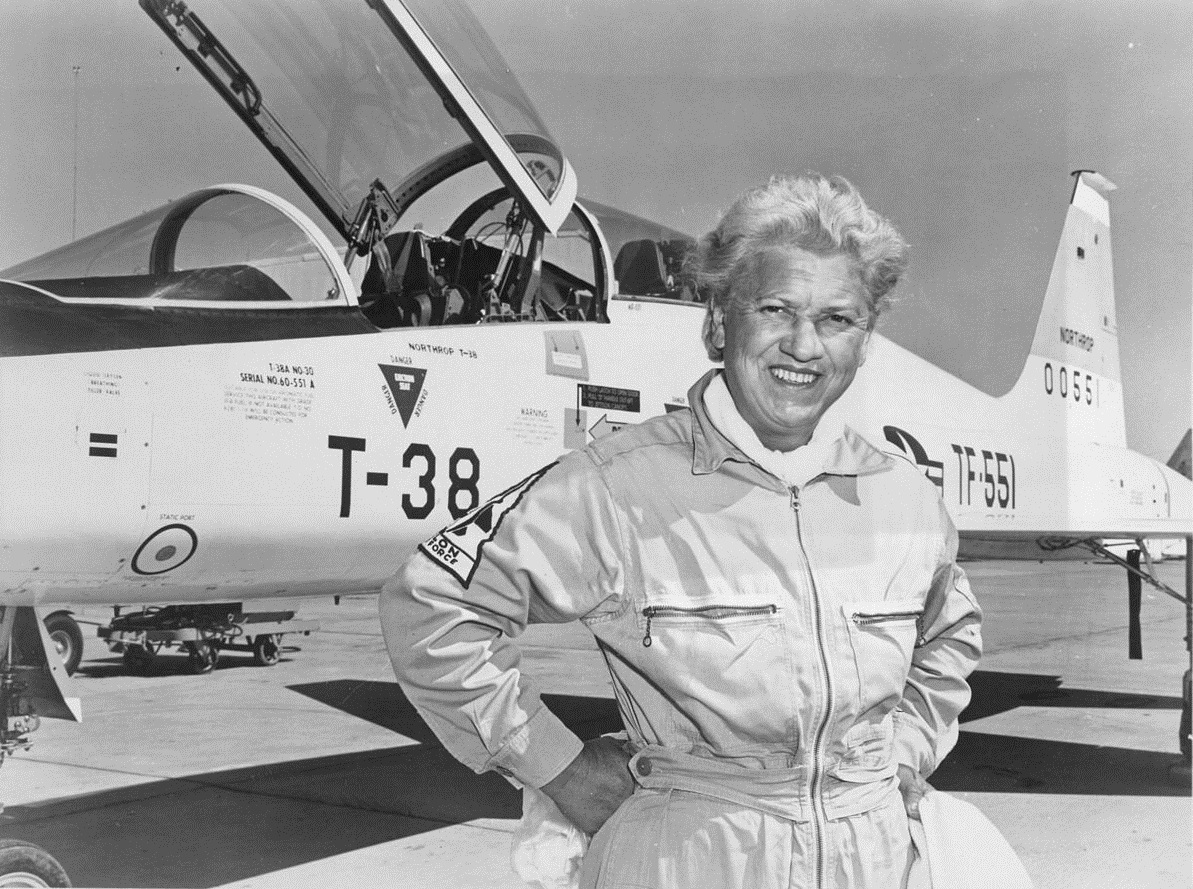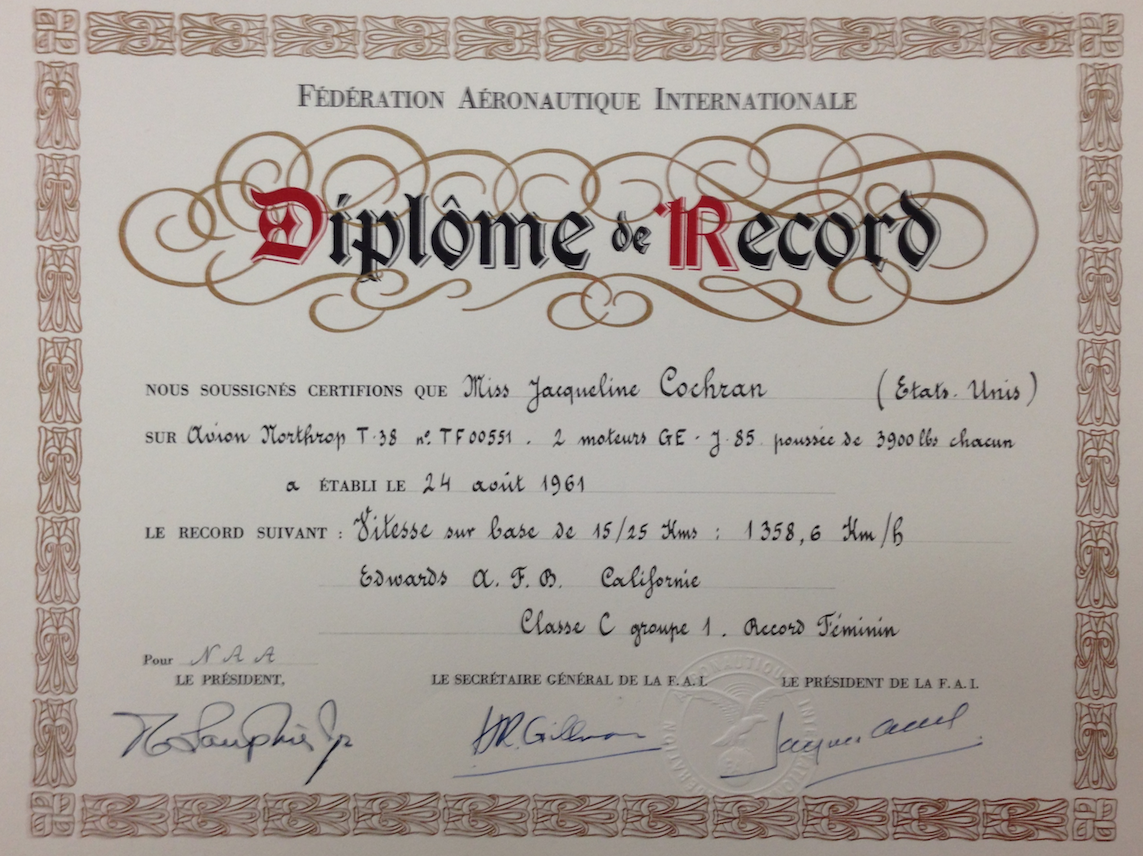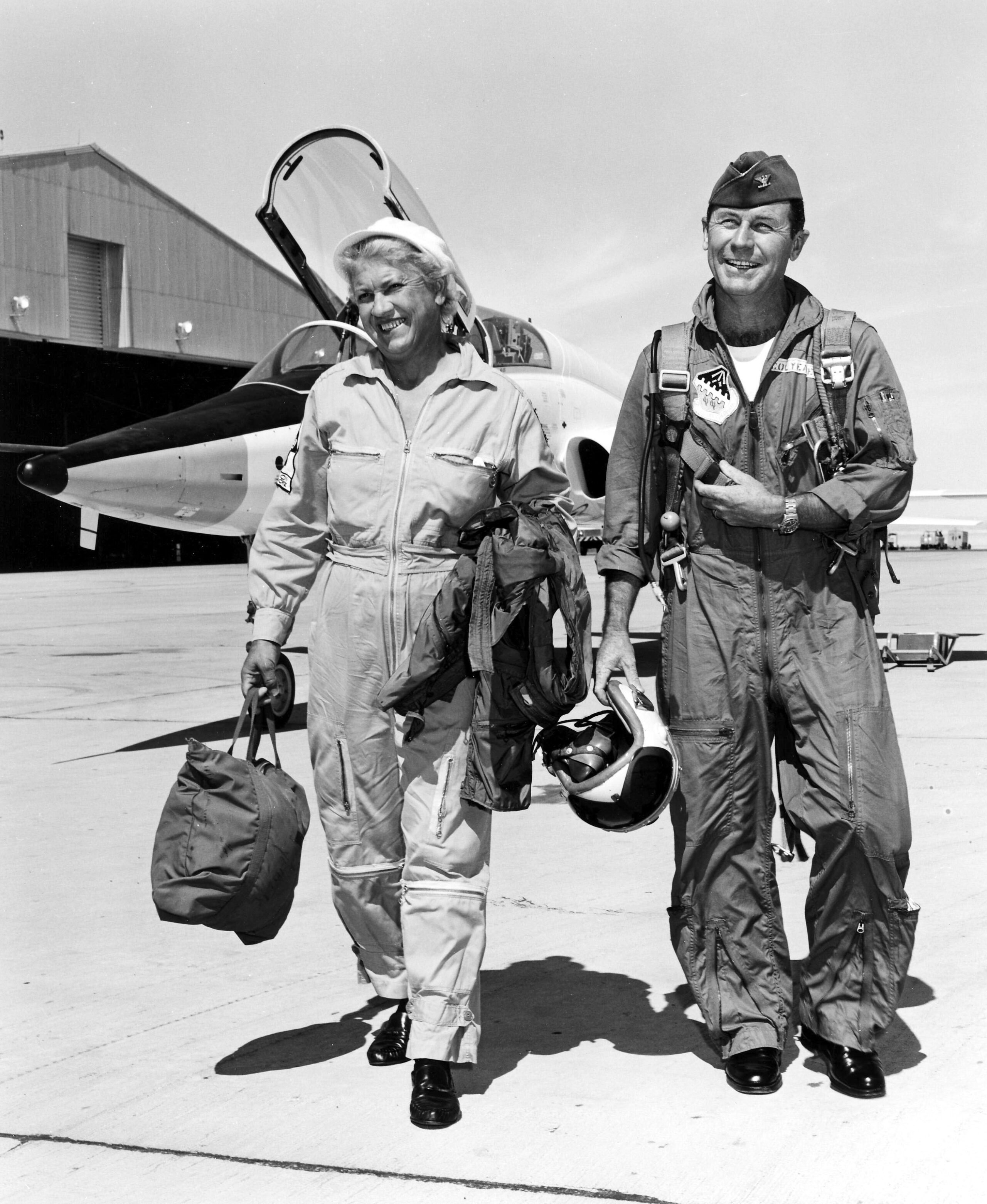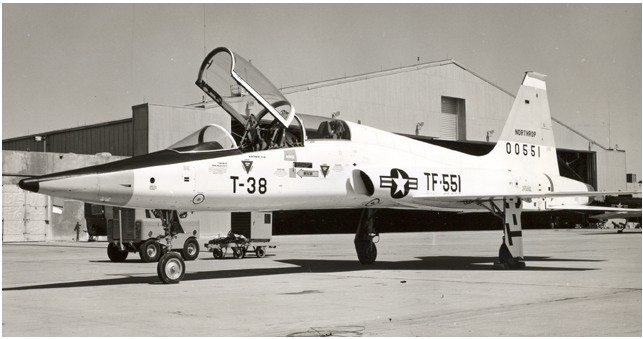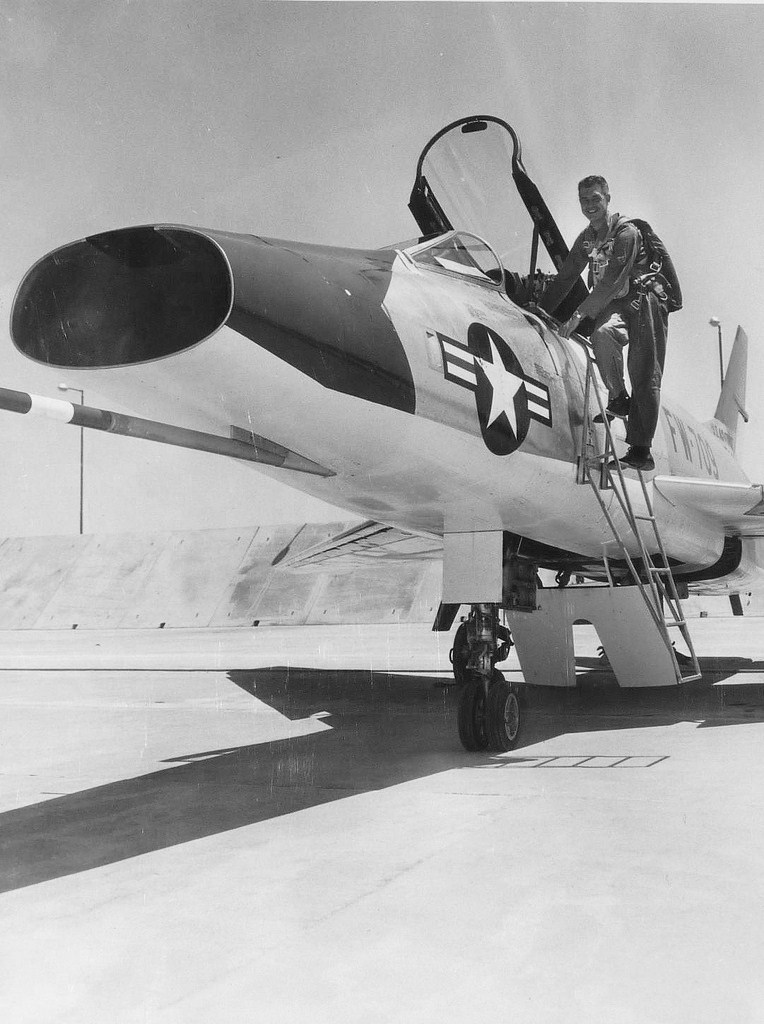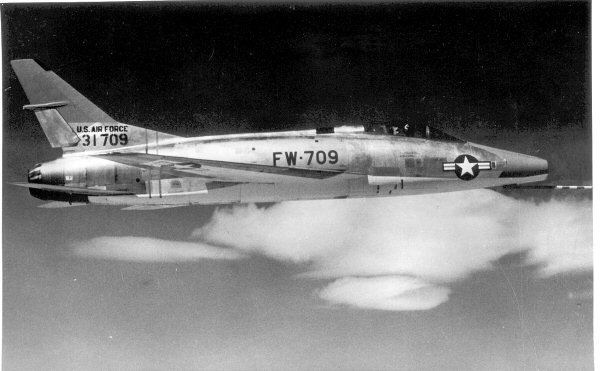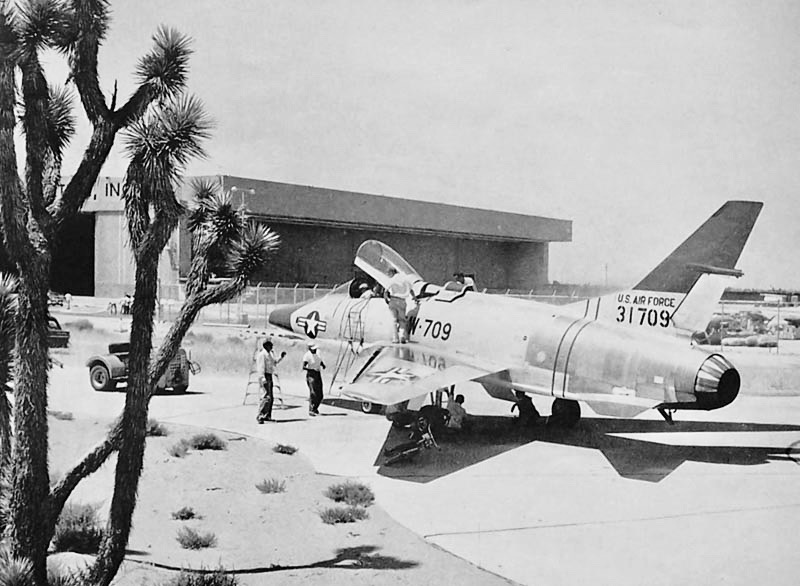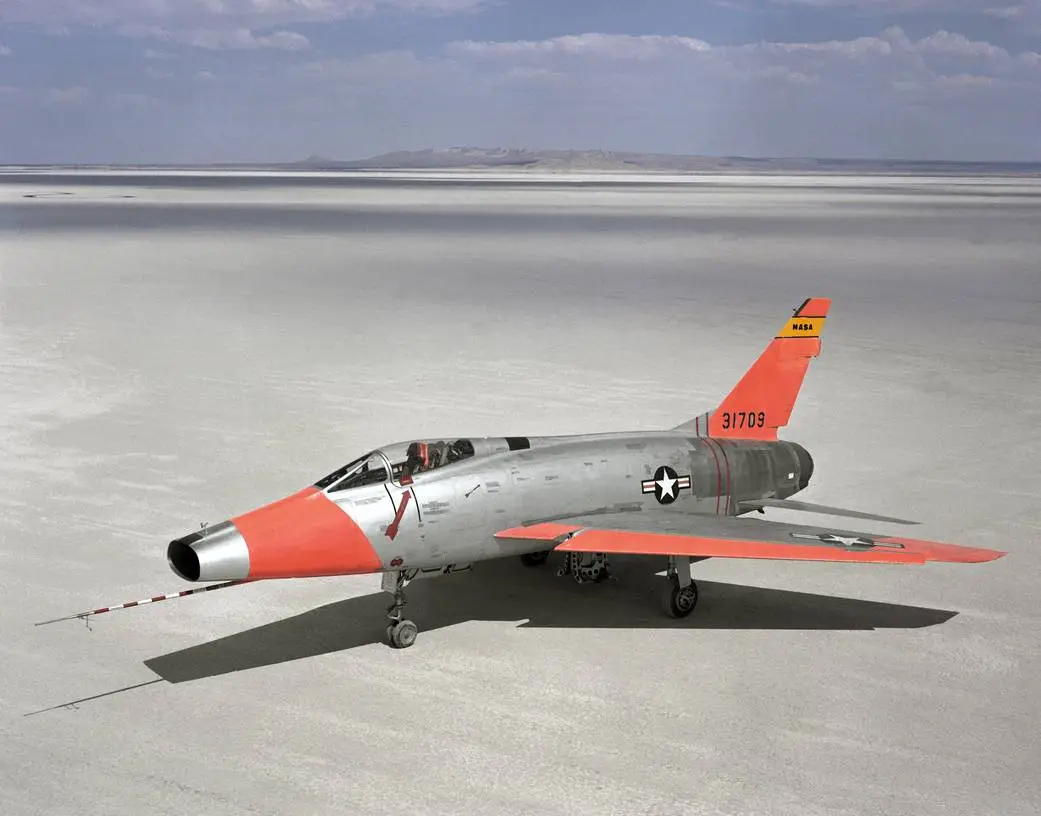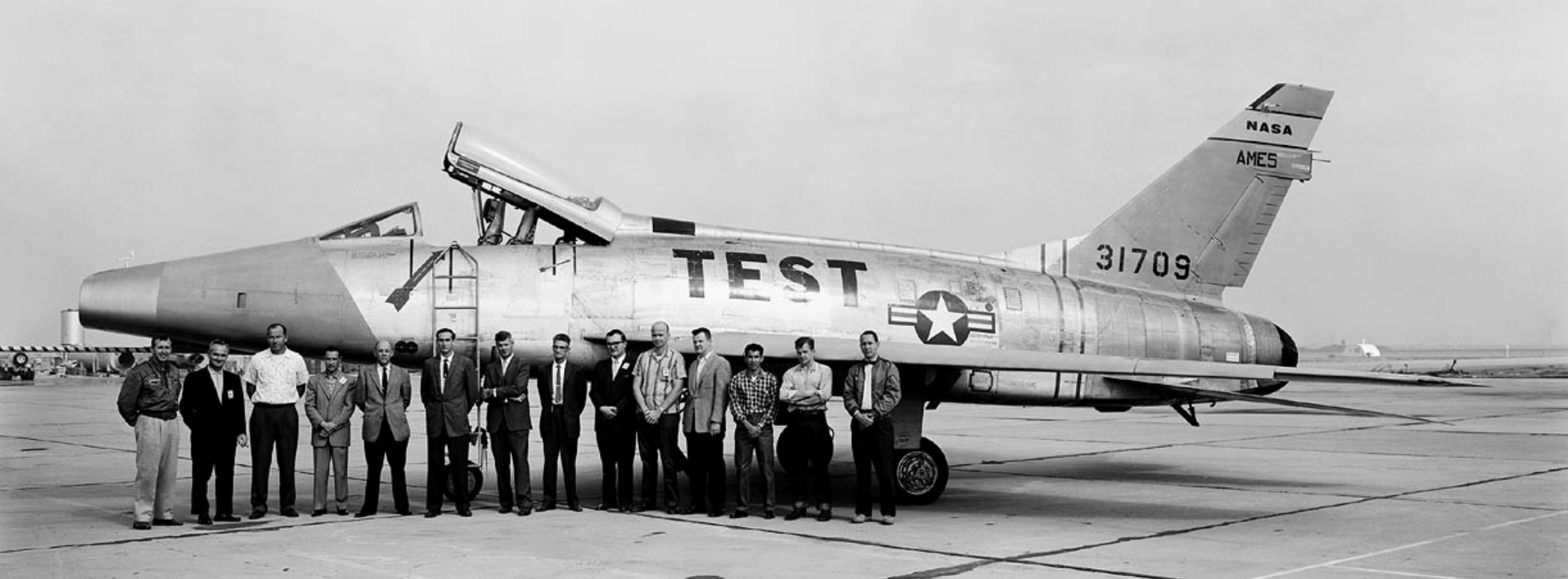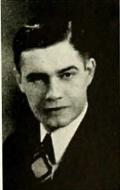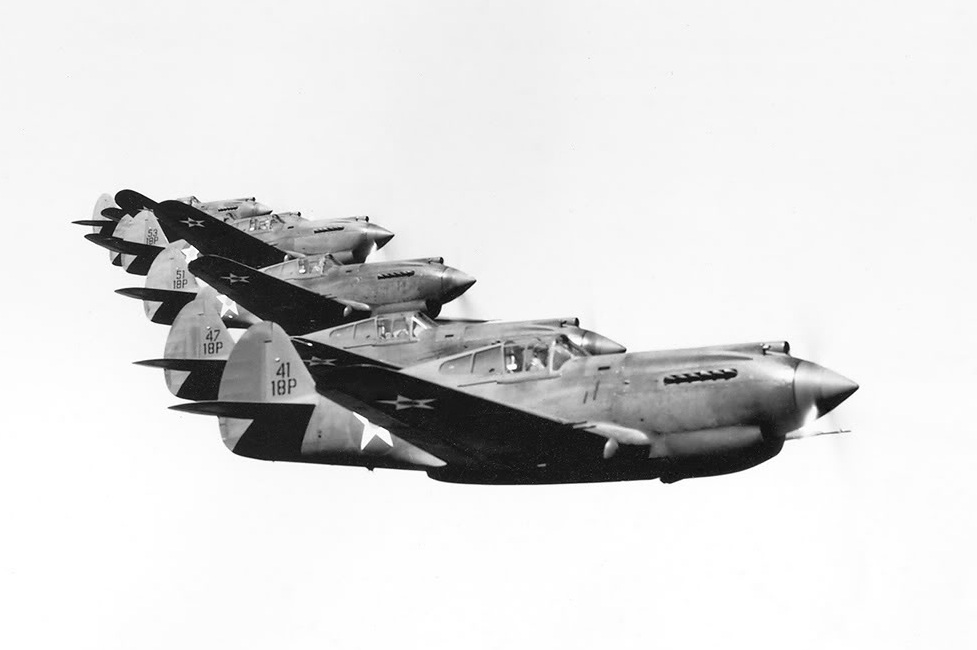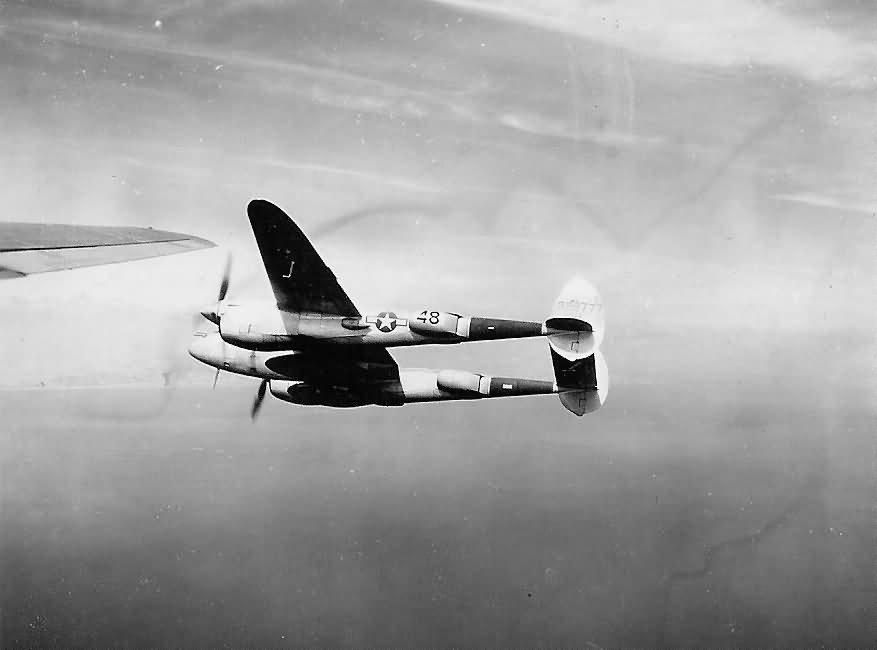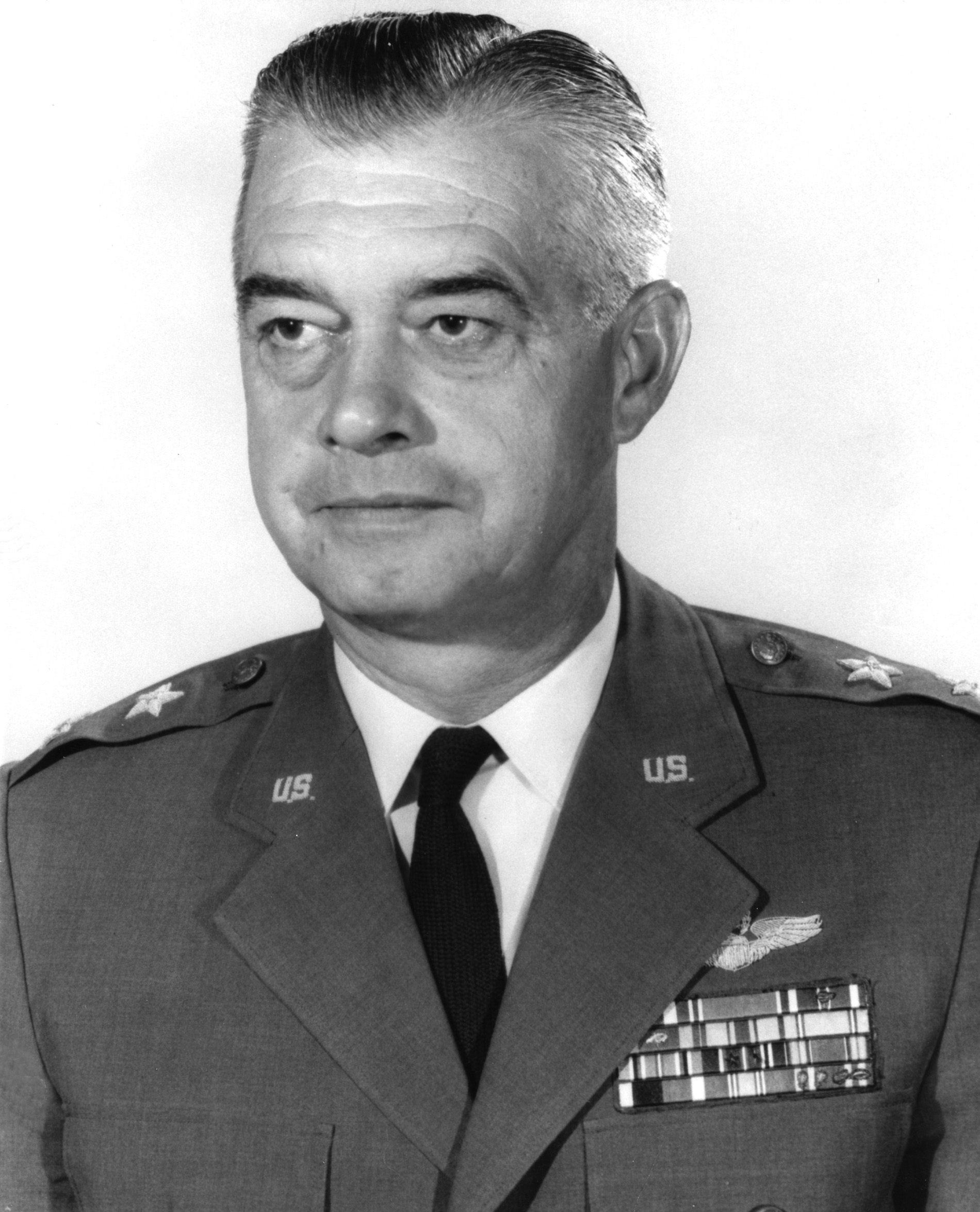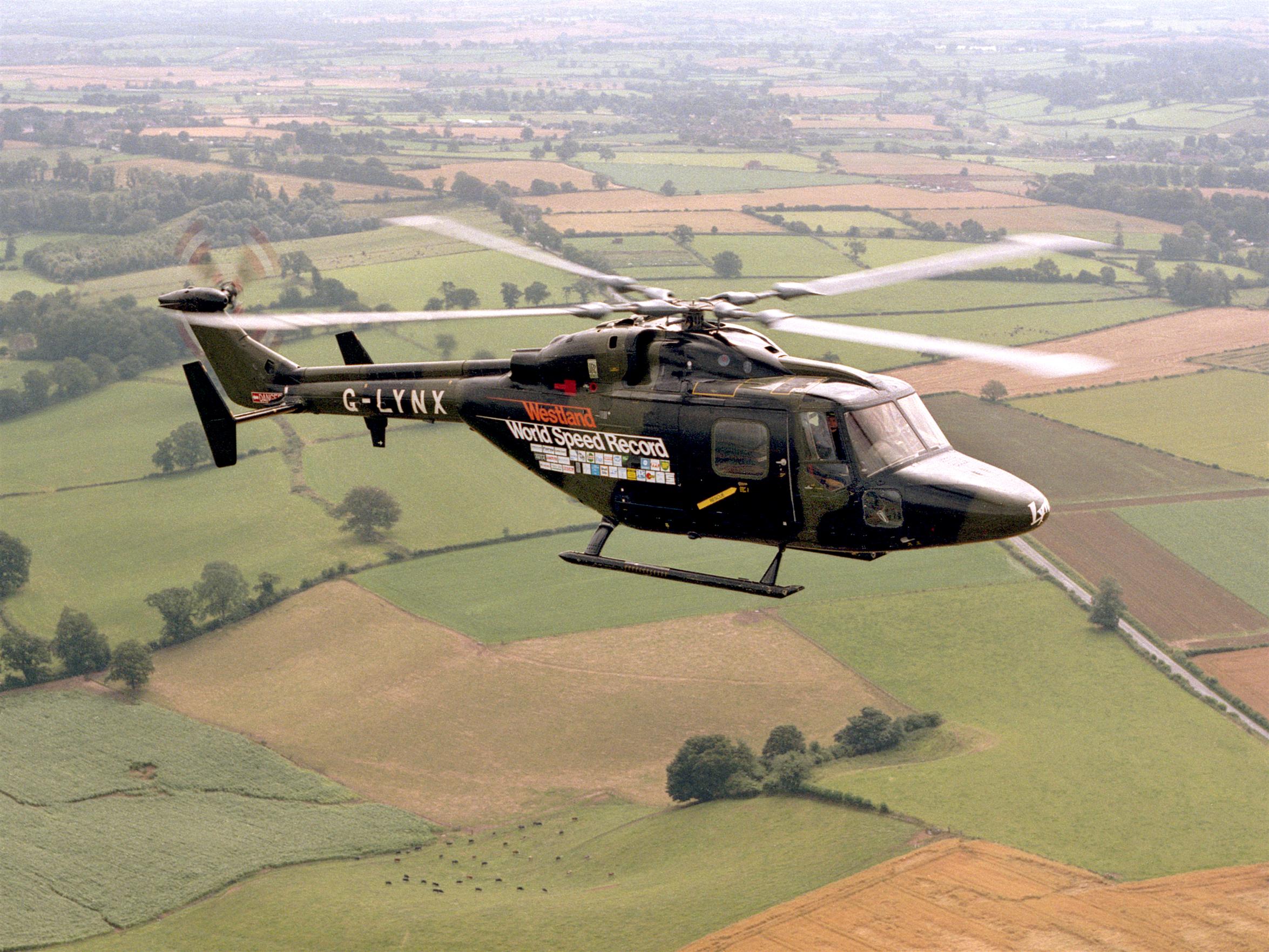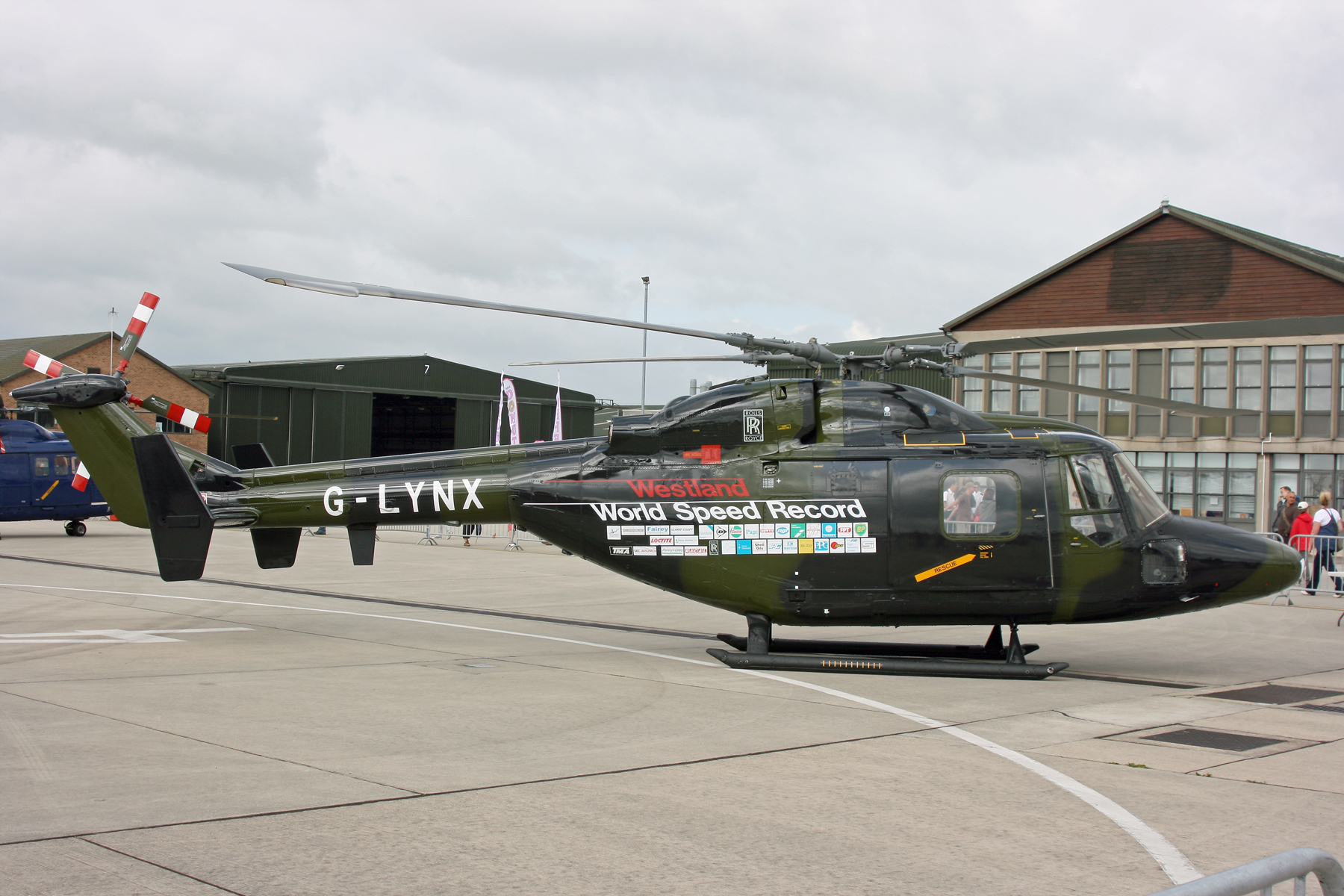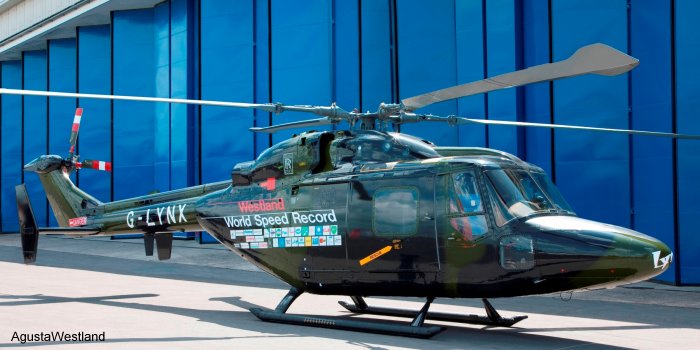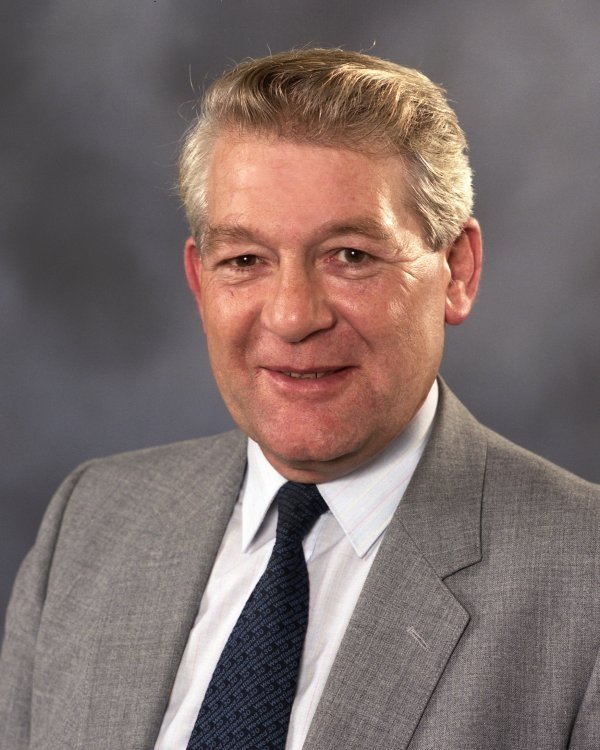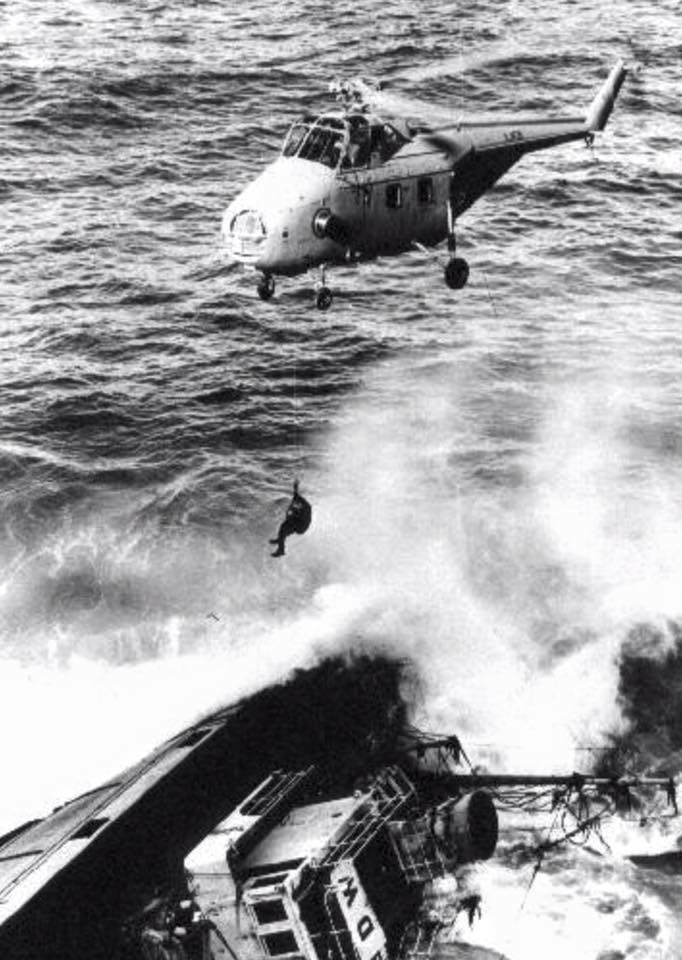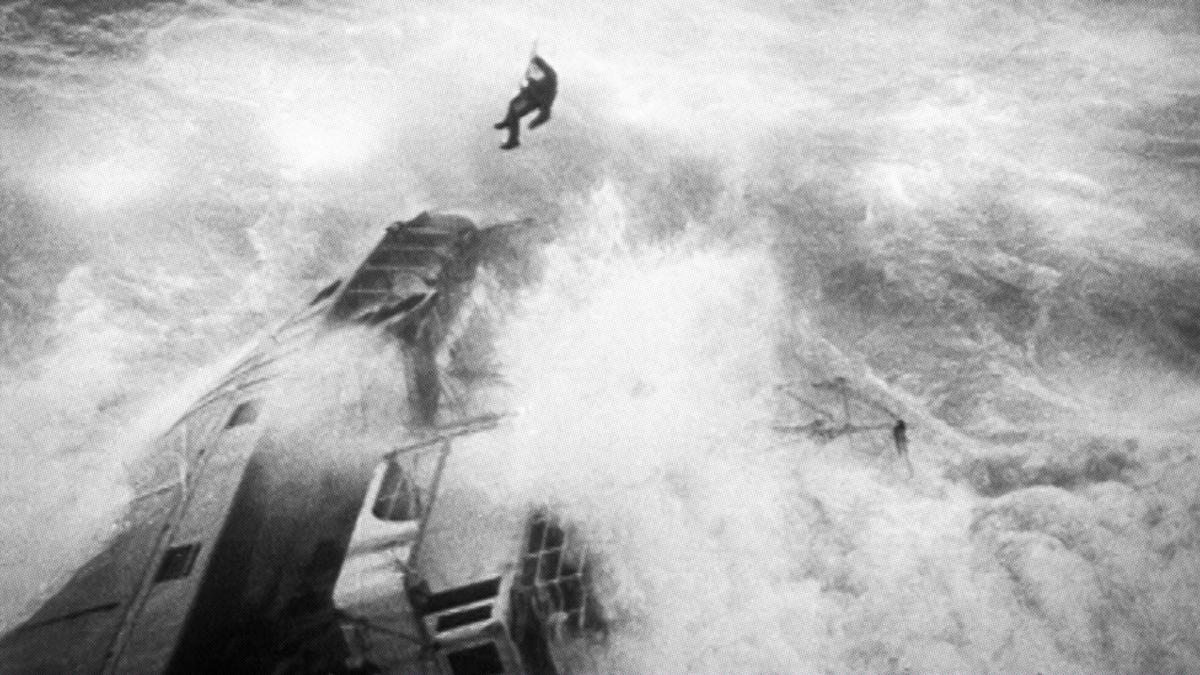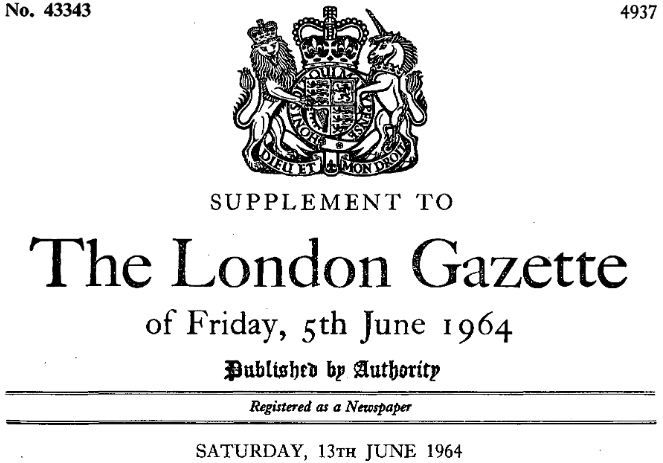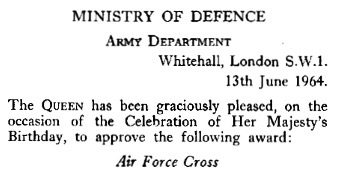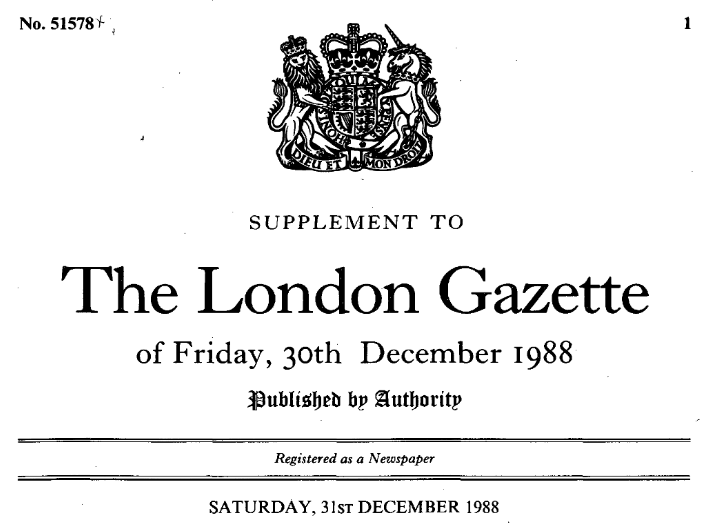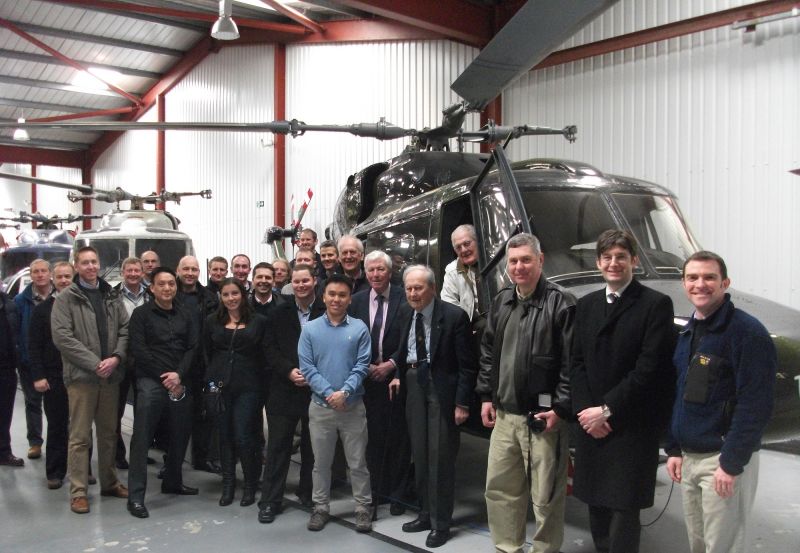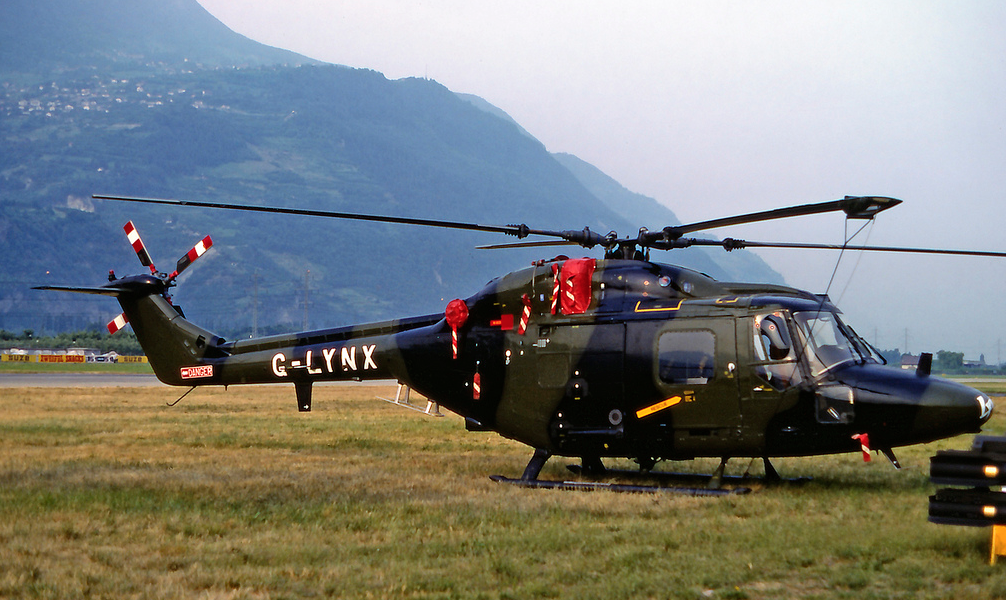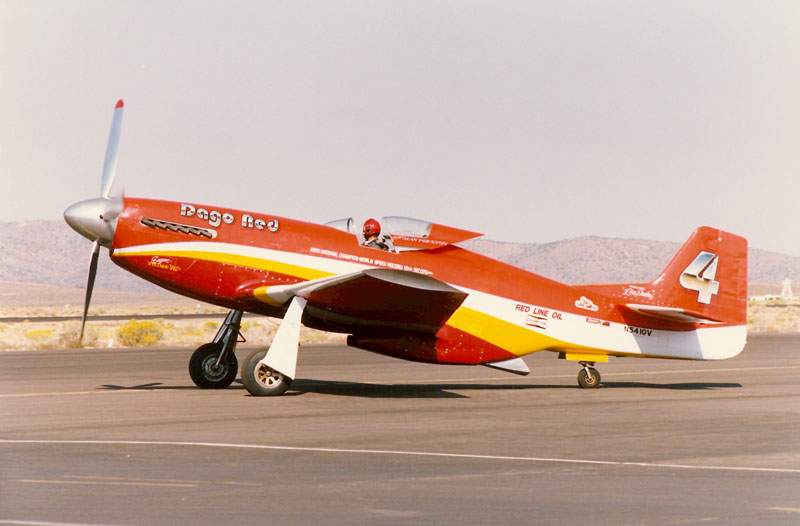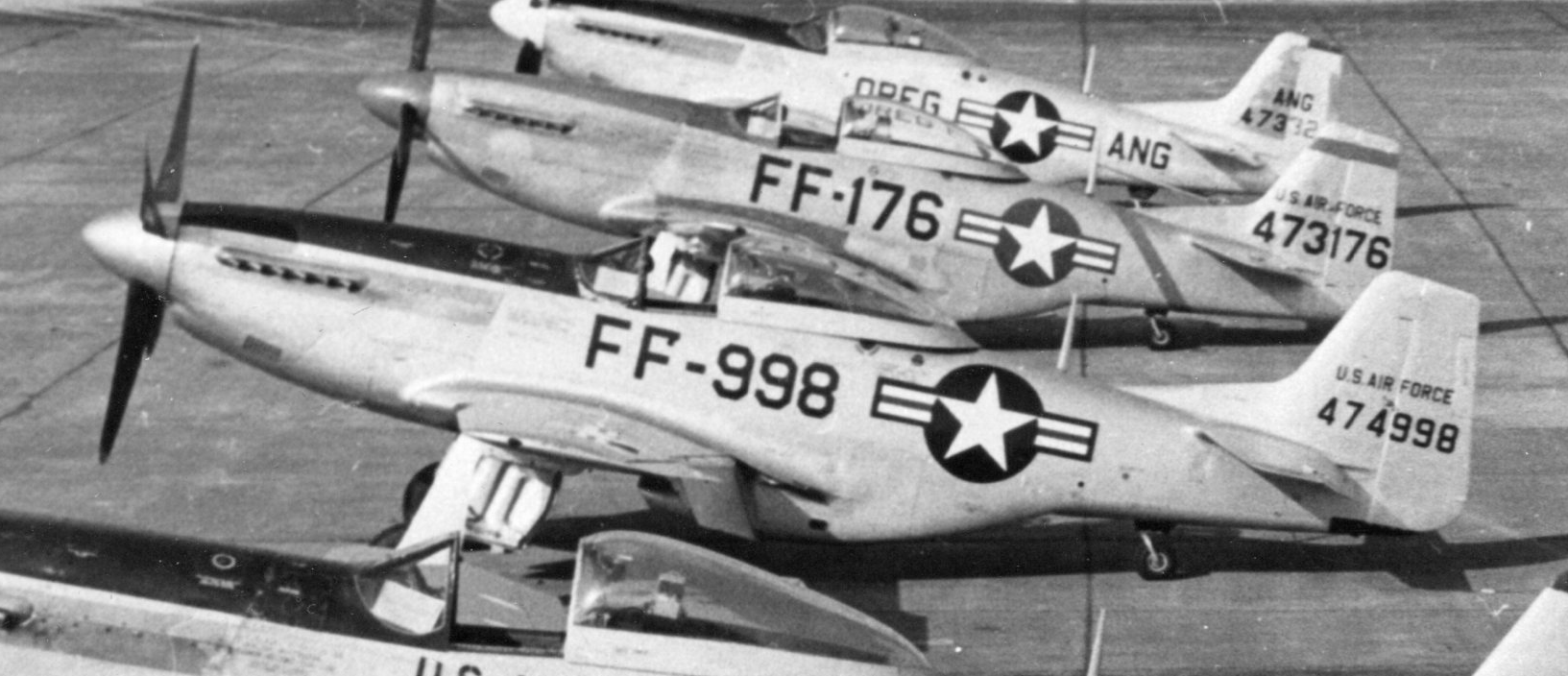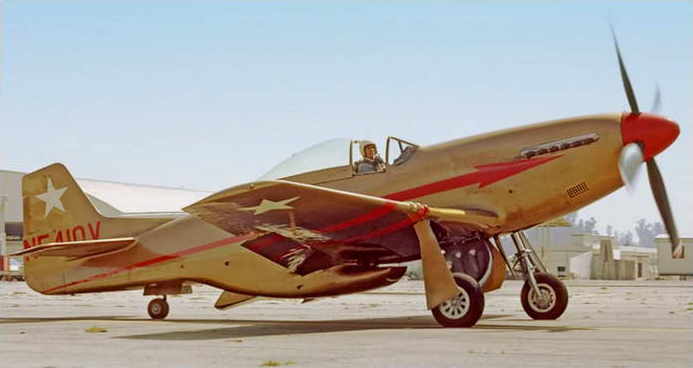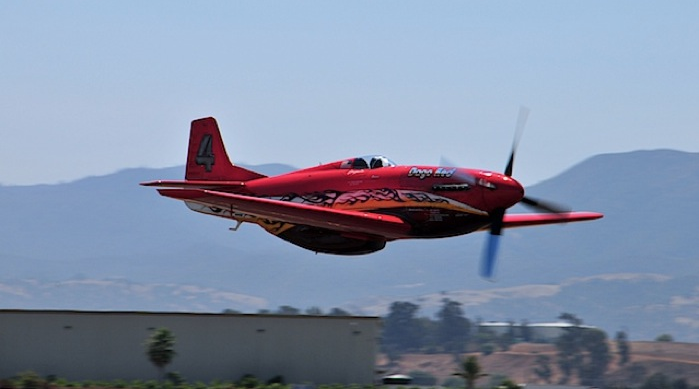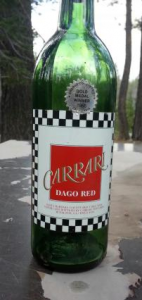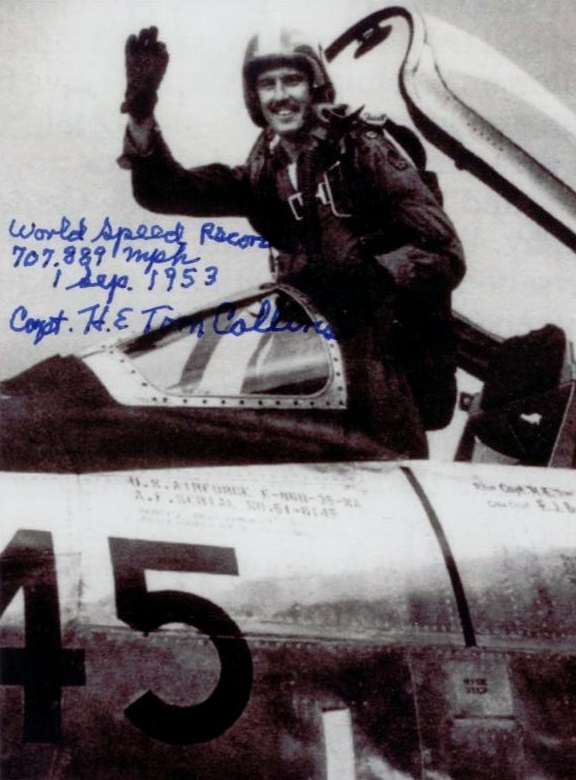
1 September 1953: Captain Harold Edward Collins, United States Air Force, flying North American Aviation F-86D-35-NA Sabre, 51-6145, set a Fédération Aéronautique Internationale (FAI) World Record for Speed Over a 15-to-25 Kilometer Straight Course of 1,139.219 kilometers per hour (707.878 miles per hour) at Vandalia, Ohio.¹
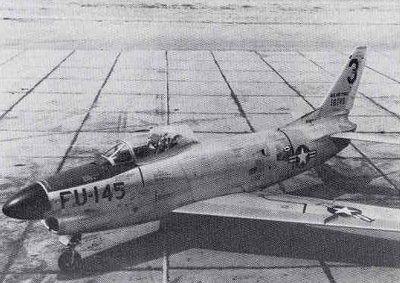
This same F-86D (North American Aviation serial number 173-289) flown by Lieutenant Colonel William F. Barnes, set an FAI World Record for Speed Over a 3 Kilometer Straight Course of 715.697 miles per hour (1,151.803 kilometers per hour), 16 July 1953 at the Salton Sea, California. (FAI Record File Number 9868)
The F-86D was an all-weather interceptor developed from North American Aviation F-86 Sabre day fighter. It was the first single-seat interceptor, and it used a very sophisticated—for its time—electronic fire control system. It was equipped with search radar and armed with twenty-four unguided 2.75-inch (69.85 millimeter) Mk 4 Folding-Fin Aerial Rockets (FFAR) rockets carried in a retractable tray in its belly.
The aircraft was so complex that the pilot training course was the longest of any aircraft in the U.S. Air Force inventory, including the Boeing B-47 Stratojet.
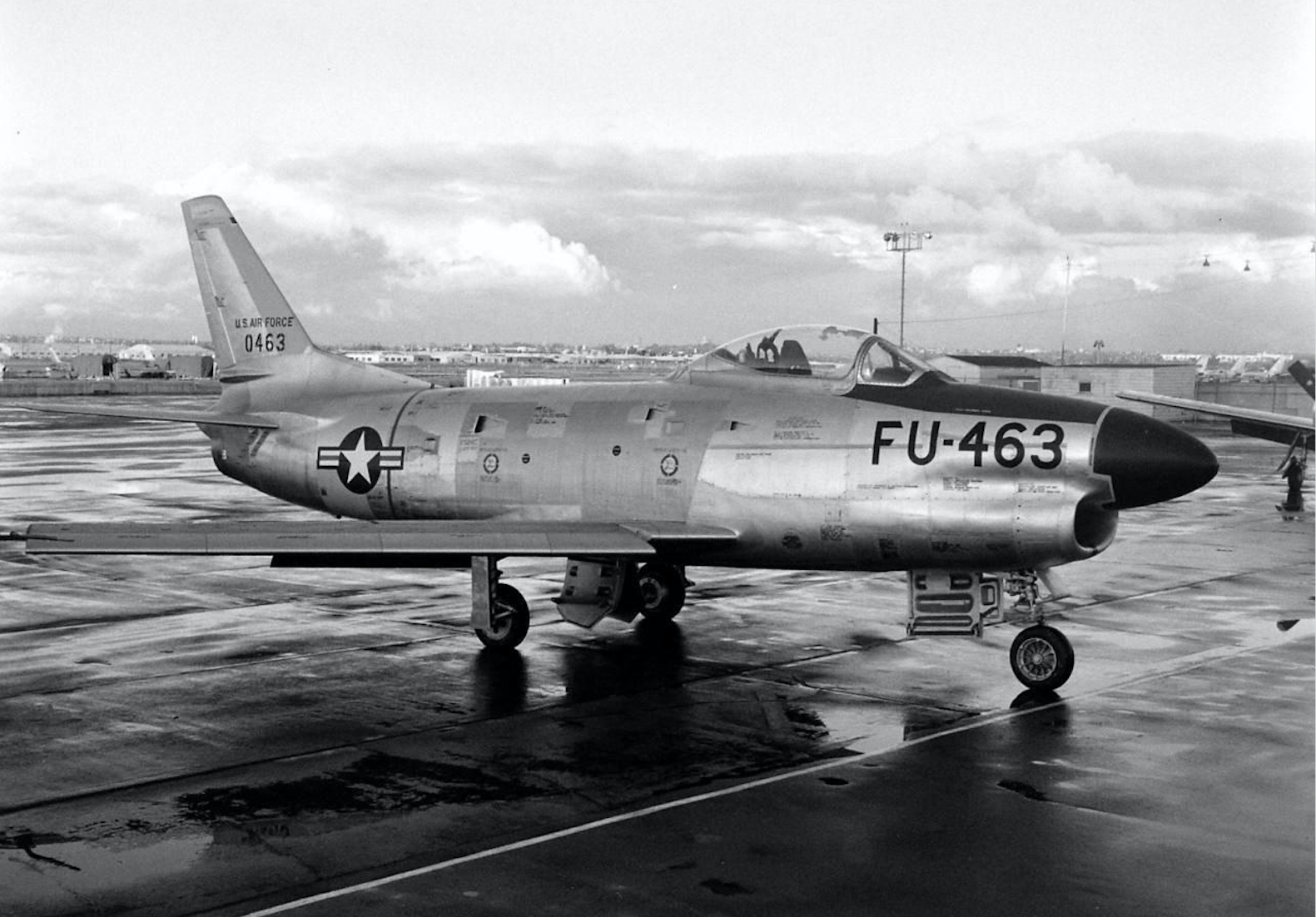
The F-86D was larger than the F-86A, E and F fighters, with a longer and wider fuselage. It was also considerably heavier. The day fighter’s sliding canopy was replaced with a hinged “clamshell” canopy. A large, streamlined radome was above the reshaped engine intake.
The F-86D Sabre was 40 feet, 3¼ inches (12.275 meters) long with a wingspan of 37 feet, 1½ inches (11.316 meters), and overal height of 15 feet, 0 inches (4.572 meters). The interceptor had an empty weight of 13,518 pounds (6,131.7 kilograms), and maximum takeoff weight of 19,975 pounds (9,060.5 kilograms). It retained the leading edge slats of the F-86A, F-86E and early F-86F fighters. The horizontal stabilizer and elevators were replaced by a single, all-moving stabilator. All flight controls were hydraulically boosted. A “clamshell” canopy replaced the sliding unit of earlier models.
The F-86D was powered by a General Electric J47-GE-17 engine. This was a single-shaft, axial-flow turbojet with afterburner. The engine had a 12-stage compressor, 8 combustion chambers, and single-stage turbine. The J47-GE-17 was equipped with an electronic fuel control system which substantially reduced the pilot’s workload. It had a normal (continuous) power rating of 4,990 pounds of thrust (22.20 kilonewtons); military power, 5,425 pounds (24.13 kilonewtons) (30 minute limit), and maximum 7,500 pounds of thrust (33.36 kilonewtons) with afterburner (15 minute limit). (All power ratings at 7,950 r.p.m.) It was 18 feet, 10.0 inches (5.740 meters) long, 3 feet, 3.75 inches (1.010 meters) in diameter, and weighed 3,000 pounds (1,361 kilograms).
The maximum speed of the F-86D was 601 knots (692 miles per hour/1,113 kilometers per hour) at Sea Level, 532 knots (612 miles per hour/985 kilometers per hour) at 40,000 feet (12,192 meters), and 504 knots (580 miles per hour/933 kilometers per hour)at 47,800 feet (14,569 meters).
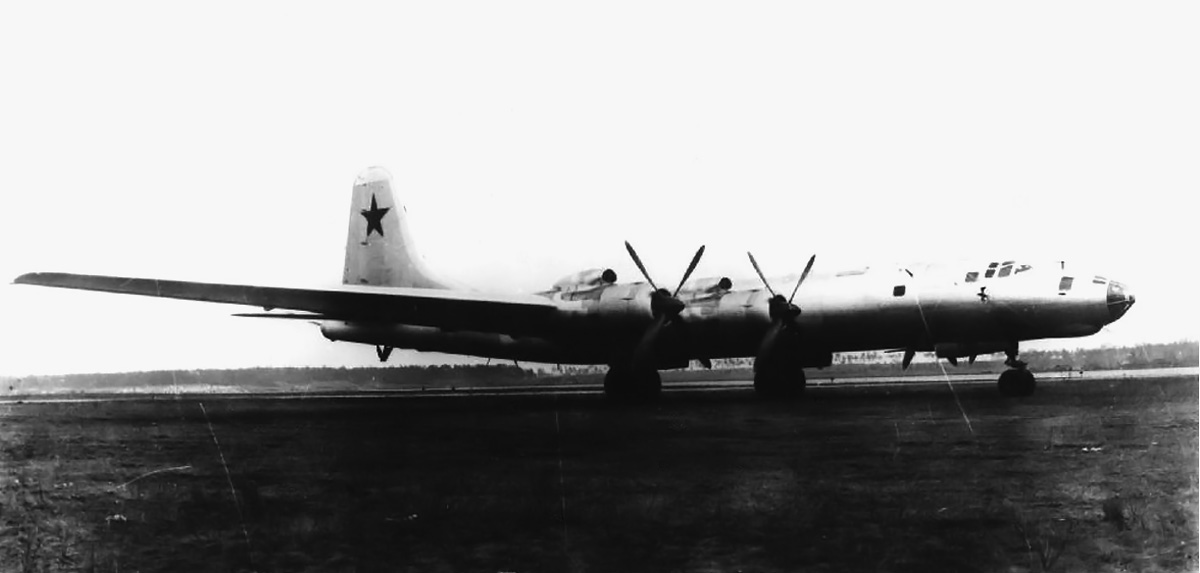
The F-86D had an area intercept range of 241 nautical miles (277 statute miles/446 kilometers) and a service ceiling of 49,750 feet (15,164 meters). The maximum ferry range with external tanks was 668 nautical miles (769 statute miles/1,237 kilometers). Its initial rate of climb was 12,150 feet per minute (61.7 meters per second) from Sea Level at 16,068 pounds (7,288 kilograms). From a standing start, the F-86D could reach its service ceiling in 22.2 minutes.
The F-86D was armed with twenty-four 2.75-inch (69.85 millimeter) unguided Folding-Fin Aerial Rockets (FFAR) with explosive warheads. They were carried in a retractable tray, and could be fired in salvos of 6, 12, or 24 rockets. The FFAR was a solid-fuel rocket. The 7.55 pound (3.43 kilogram) warhead was proximity-fused, or could be set for contact detonation, or to explode when the rocket engine burned out.
The F-86D’s radar could detect a target at 30 miles (48 kilometers). The fire control system calculated a lead-collision-curve and provided guidance to the pilot through his radar scope. Once the interceptor was within 20 seconds of its target, the pilot selected the number of rockets to fire and pulled the trigger, which armed the system. At a range of 500 yards (457 meters), the fire control system launched the rockets.
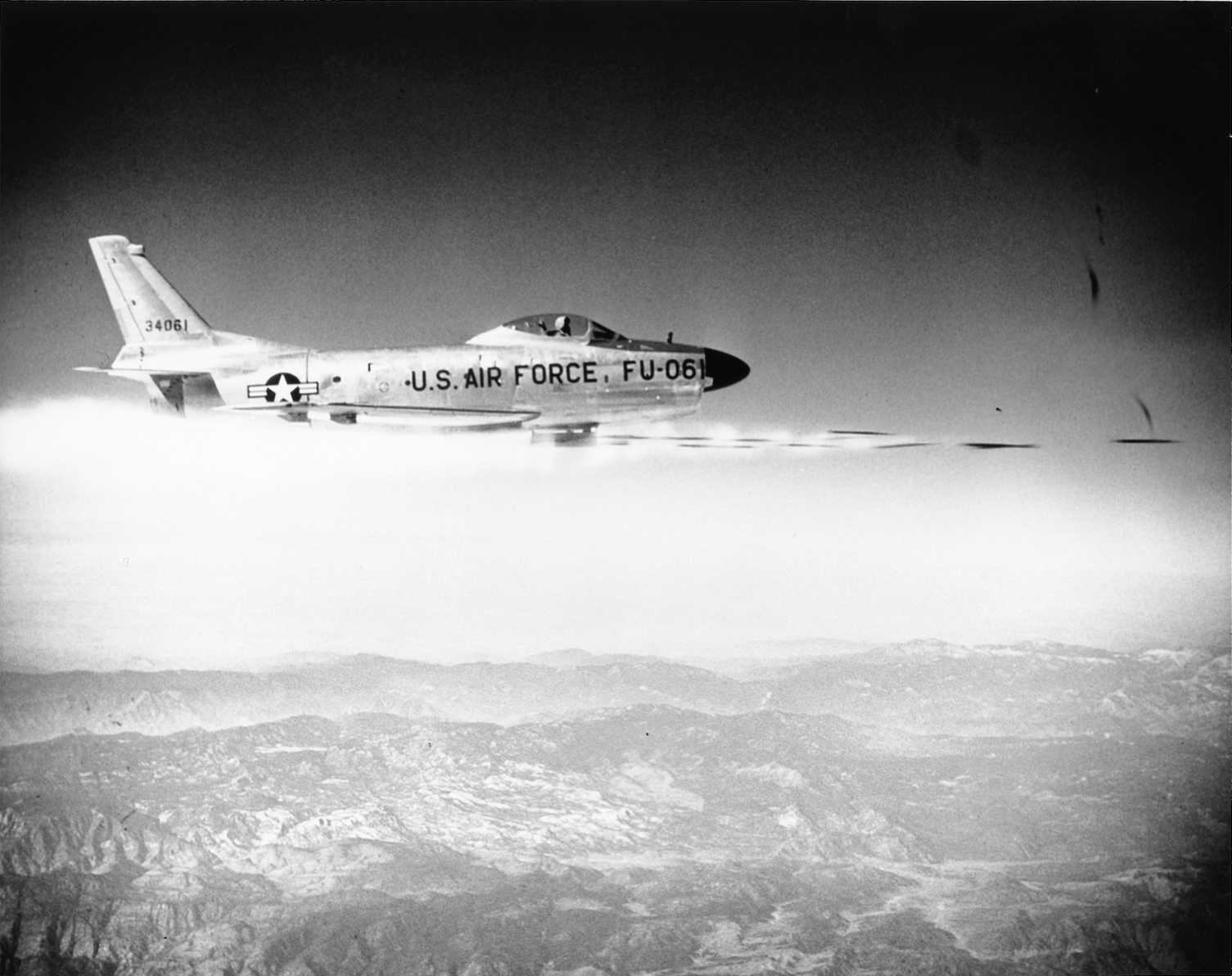
Between December 1949 and September 1954, 2,505 F-86D Sabres (sometimes called the “Sabre Dog”) were built by North American Aviation. There were many variants (“block numbers”) and by 1955, almost all the D-models had been returned to maintenance depots or the manufacturer for standardization. 981 of these aircraft were modified to a new F-86L standard. The last F-86D was removed from U.S. Air Force service in 1961.
After its service with the United States Air Force, the record-setting Sabre 51-6145 was transferred to a NATO ally, the Ellinikí Vasilikí Aeroporía (Royal Hellenic Air Force).
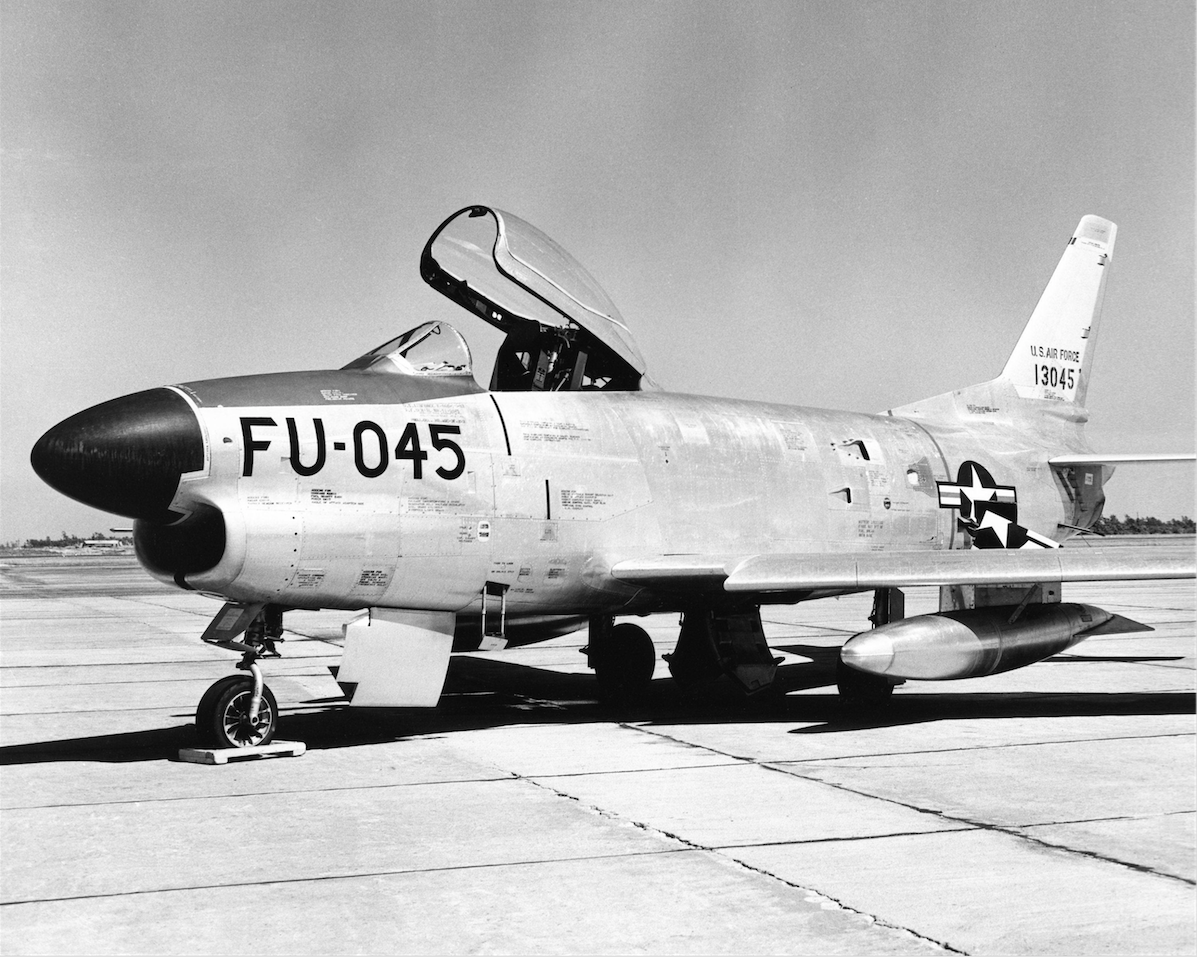
¹ FAI Record File Number 8869
© 2018, Bryan R. Swopes
